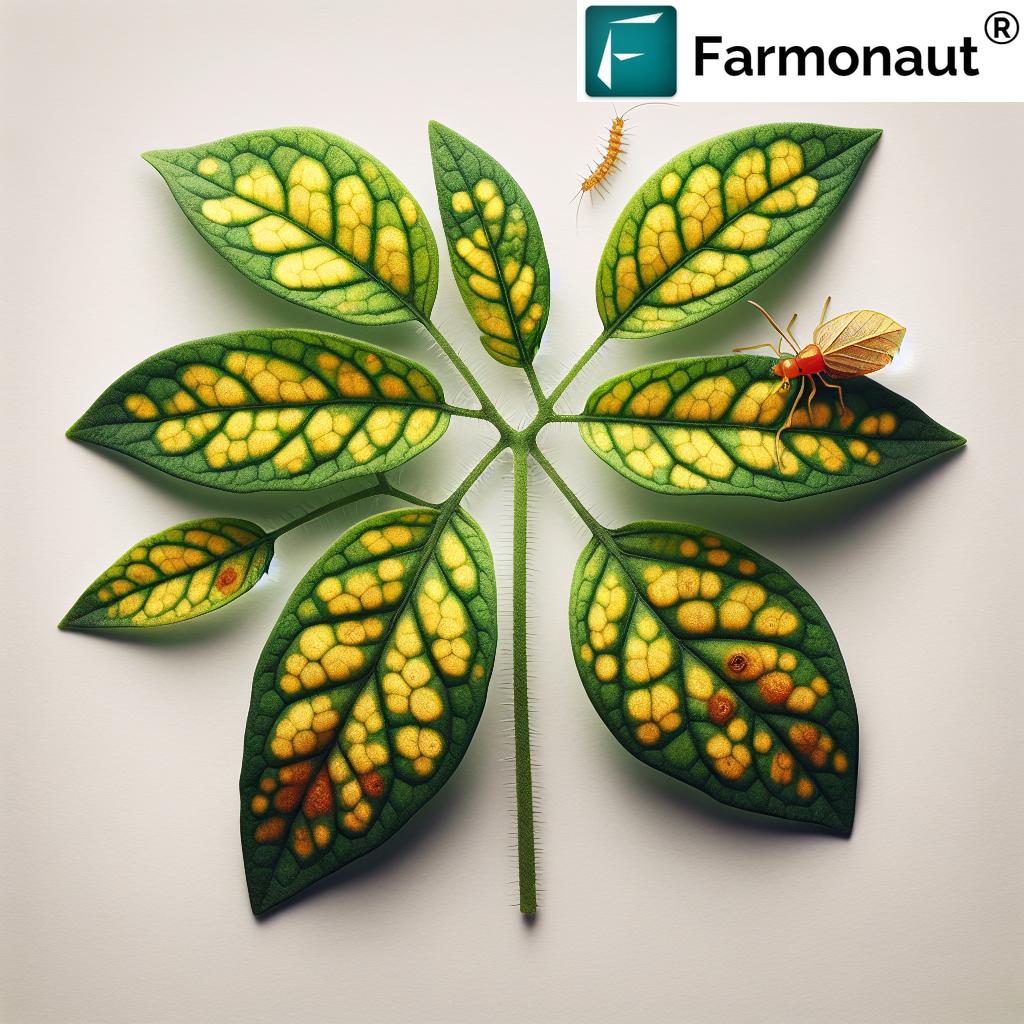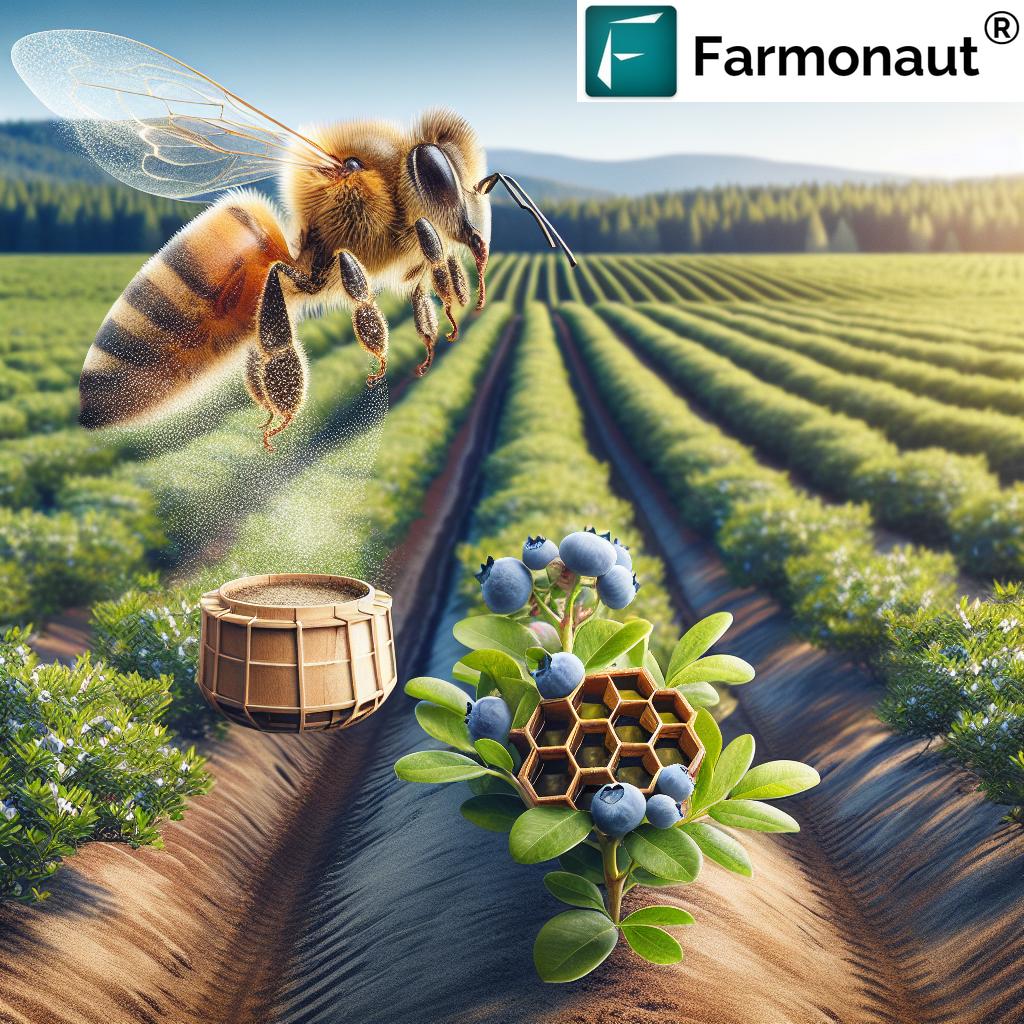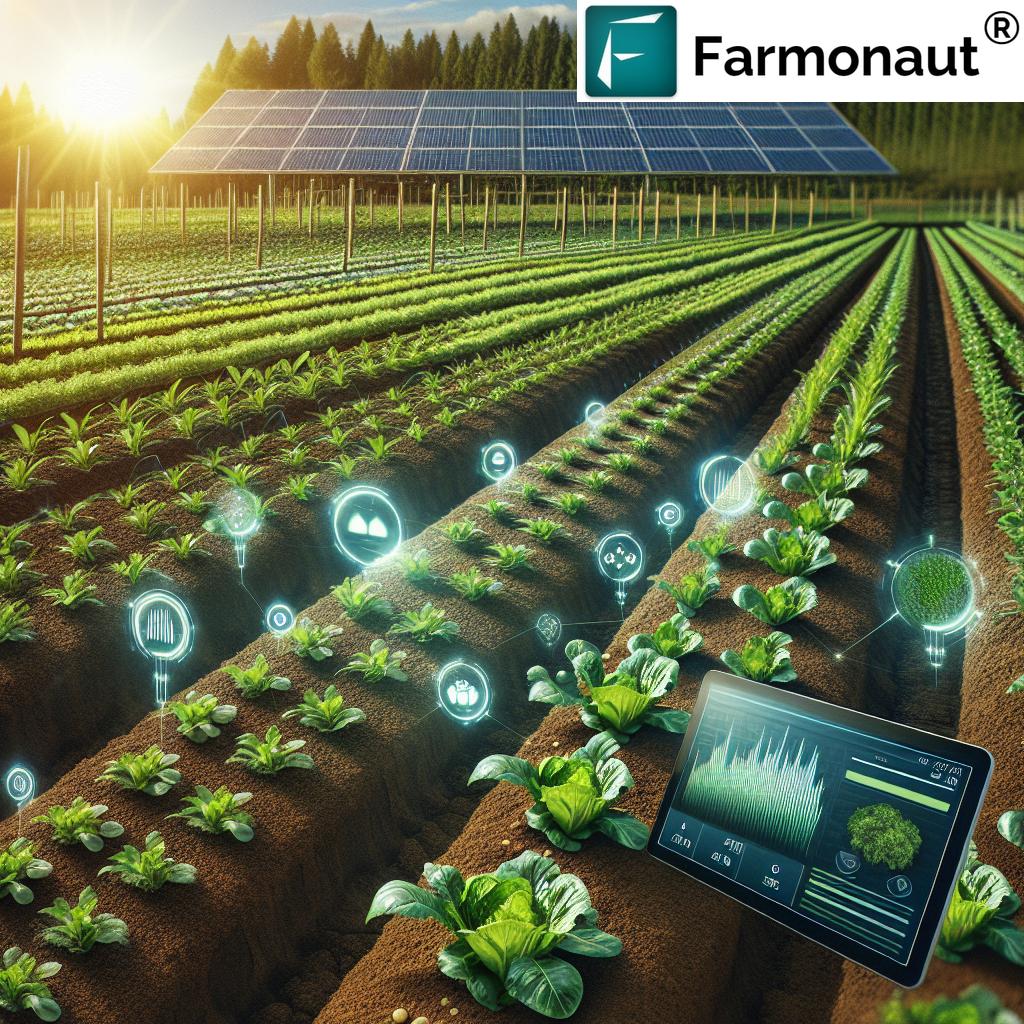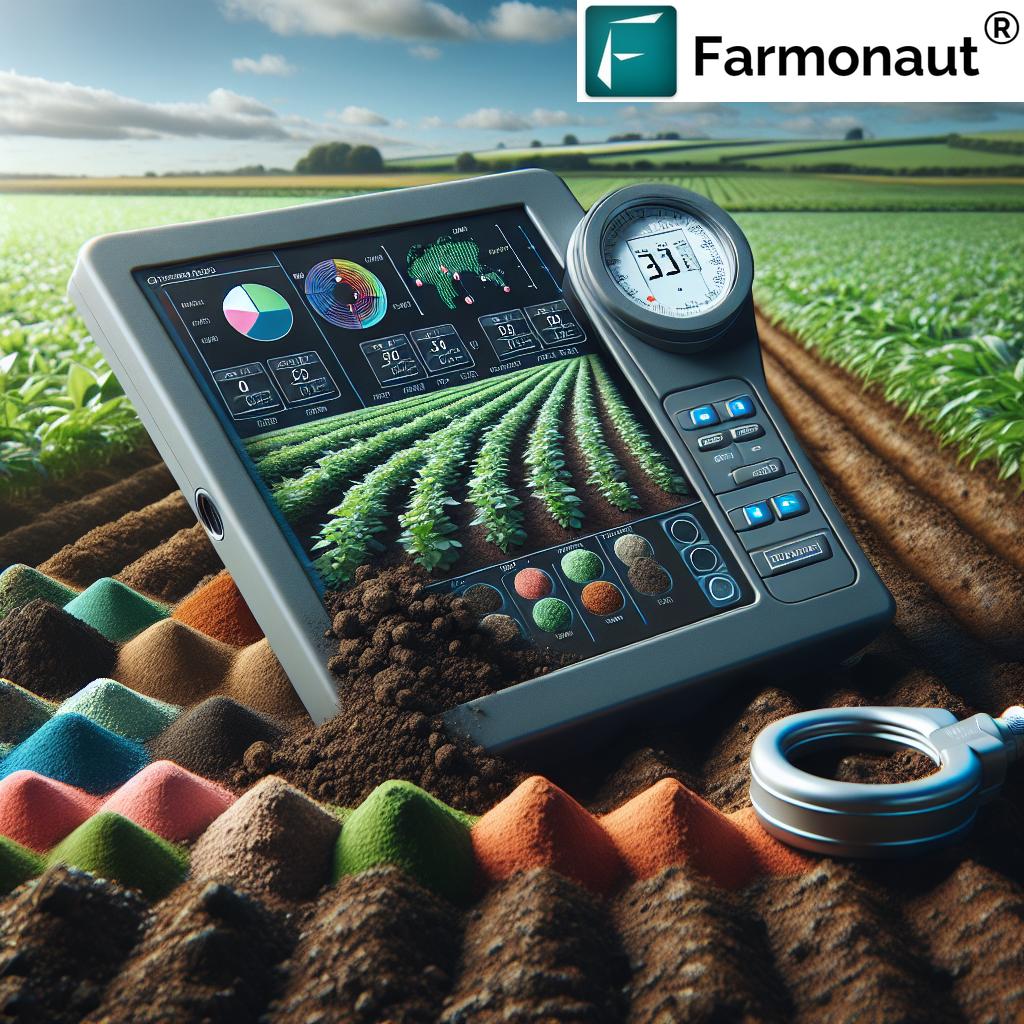How to Reduce Pesticide Use in Agriculture: 7 Ways
Reducing Pesticide Use in Agriculture: Pathways to Sustainable Farming in 2025
“In 2025, integrated pest management can cut pesticide use by up to 50% on sustainable farms.”
Introduction: Facing the Pesticide Challenge in Agriculture
In 2025 and moving into the future, agriculture stands at a critical crossroads: the imperative to boost food production to feed our growing population must meet the fundamental need to protect environmental and human health. Among the most pressing challenges is how to reduce pesticide use in agriculture—an issue central to biodiversity, soil health, water contamination, and the overall well-being of farmers and consumers alike.
While pesticides remain instrumental in controlling pests and safeguarding crop yields, their widespread and sometimes indiscriminate application contributes to ecosystem degradation, water contamination, and negative health risks facing both producers and consumers. The drive to reduce pesticide dependency is not just about protecting birds, insects, and soils—it is also about lowering costs, minimizing input expenses, and promoting sustainable, resilient farming that benefits all.
This comprehensive guide explores how to reduce pesticide use in agriculture through seven practical, sustainable, and proven strategies. We highlight pathways that integrate advanced technologies, community action, and ecosystem-based practices—charting a holistic roadmap for a greener, more productive future.
“Precision agriculture tools reduce chemical application by 30%, promoting eco-friendly farming and healthier soils.”
Comparison Table: 7 Ways to Reduce Pesticide Use in Agriculture
| Method | Estimated Pesticide Reduction (%) | Cost Impact (Estimated) | Implementation Complexity | Environmental Benefit |
|---|---|---|---|---|
| Integrated Pest Management (IPM) | 30–50% | Moderate Decrease | Moderate | Very High |
| Precision Agriculture Tools | 20–40% | Significant Decrease | Medium–High | High |
| Biological Control Agents & Biopesticides | 20–35% | Moderate Decrease | Medium | High |
| Agroecological Practices | 15–35% | Long-term Decrease | Medium | Very High |
| Sustainable Cost Management Practices | 10–25% | High Decrease | Medium–High | High |
| Supporting Policy & Community Engagement | 10–30% | Varies (Often Decrease) | High | Very High |
| Education & Consumer Awareness | 5–20% | Low Cost | Low–Medium | High |
1. How to Reduce Pesticide Use in Agriculture with Integrated Pest Management (IPM)
The Cornerstone Approach
When discussing how to reduce pesticide use in agriculture, Integrated Pest Management (IPM) stands uncontested as the most holistic and cornerstone approach available. IPM combines biological, cultural, physical, and—when strictly necessary—chemical methods to control pests in a way that is environmentally sustainable and economically viable.
- Monitoring: Regular pest population monitoring allows farmers to assess whether pests have reached threshold levels that dictate intervention—drastically reducing unnecessary chemical application.
- Biological Control: Promoting the use of natural predators, parasitoids, and beneficial organisms to regulate pest populations.
- Cultural Practices: Implementing crop rotation, planting pest-resistant varieties, (Find more about how Farmonaut’s carbon footprint monitoring tools empower sustainable crop planning), and adjusting planting times to disrupt pest life cycles.
- Physical Controls: Using barriers, traps, or precise mechanical removal methods for pests, lowering the reliance on chemicals.
- Judicious Chemical Use: Only as a last resort, and only after all threshold-based, ecologically justified criteria are met, using the least toxic chemical interventions available.
- Continuous Learning and Adaptation: Tailoring interventions over time to shifting pest dynamics and emerging threats.
By integrating multiple control methods and emphasizing monitoring, IPM can slash pesticide usage on sustainable farms by up to 50%, according to recent data for 2025. This not only contributes to soil health and biodiversity preservation, but also helps farmers lower ongoing input costs and reduce their exposure to harmful chemicals.
A robust IPM program relies heavily on accurate data. Farmonaut’s AI-based advisory systems, combined with satellite monitoring, enable smarter, more dynamic pest forecasting for farmers, allowing independent or large-scale growers to respond rapidly, thus optimizing input use and minimizing chemical dependency.
2. Precision Agriculture: Optimizing Pesticide Use through Technology
Advancements in Precision Agriculture for 2025
The rise of precision agriculture technologies has transformed the landscape of pest management and pesticide application. Precision tools harness advanced data analytics, satellites, drones, and remote sensing to ensure pesticides are only applied where and when needed, fostering sustainability and reducing cost of production in agriculture.
- Remote Sensing & Satellite Imagery: Identifies hot spots for pest outbreaks, crop stress, or diseases early, allowing for targeted interventions and reduced land use in agriculture (Learn how with Farmonaut’s Large-Scale Farm Management solutions).
- Drones & Smart Sprayers: Deploy exact doses of pesticides to affected areas, drastically minimizing overuse, drift, and runoff. Drones can also monitor hard-to-reach sections, ensuring complete field coverage with lower chemical input.
- AI & Machine Learning: Forecast pest outbreaks, learning from soil, weather, and crop data, allowing preemptive or optimized intervention.
- Sensor Networks: Detectors embedded in fields provide real-time feedback on pest populations, soil moisture, and disease risk, activating targeted pesticide applications only as warranted.
By deploying these technologies, farmers have consistently reported up to 30% reductions in chemical application, offering a clear path to sustainable farming (reduced input costs and improved environmental health).
Looking for real-time, satellite-powered field insights? Farmonaut offers dynamic monitoring, AI-driven advisories, and traceability tools accessible on Web  , Android
, Android  , and iOS
, and iOS  . Harness satellite data and AI for precision farming.
. Harness satellite data and AI for precision farming.
To developers and agri-tech businesses: integrate Farmonaut’s satellite-based APIs to supercharge your services with real-time, scalable crop insights. See our API or dive into the Developer Docs for advanced integration.
3. Leveraging Biological Control Agents & Biopesticides for Sustainable Pest Management
Another powerful pathway for reducing pesticide use in agriculture comes from biological control agents and biopesticides. Instead of defaulting to broad-spectrum synthetic chemicals, these eco-friendly solutions harness nature itself to regulate pest populations.
- Natural Enemies: Beneficial insects (lady beetles, lacewings), parasitic wasps, and microbial pathogens are deployed to suppress pest outbreaks.
- Biopesticides: Derivatives from bacteria (e.g., Bacillus thuringiensis), plant extracts, fungi, or minerals serve as targeted bio-based pesticides with much lower environmental impacts and few (if any) residues.
- Reduced Resistance: Unlike many chemical pesticides, biological agents impose lower selection pressure for resistance, extending the effectiveness of pest control strategies over time.
- Residue-Free Foods: Growing consumer awareness and strict regulatory demands in the global food market favor produce with minimal chemical residues, giving a marketing edge to farms adopting these practices.
Biopesticides and biological control can reduce pesticide inputs by up to 35% depending on cropping systems and pest loads. Their integration into broader management plans offers sustainable, reliable results—placing environmental and human health front and center.
Did you know? Farmonaut’s platform enables real-time detection of pest outbreaks and crop stress for timely, targeted deployment of biopesticides. By combining satellite imagery and predictive AI, we help farmers optimize biological inputs while boosting on-farm biodiversity and ecosystem resilience.
4. Agroecological Practices: Promoting Biodiversity and Reducing Pesticide Dependency
How can we reduce pesticide use in agriculture? Agroecology provides a system-wide answer. Agroecological practices focus on redesigning farm landscapes to leverage natural ecosystem services—fostering biodiversity, building soil health, and encouraging beneficial predator populations that keep pests naturally in check.
- Intercropping: Planting a variety of species together confuses pests and supports a dynamic community of pollinators and predator insects.
- Cover Cropping: Seasonal cover crops suppress weed growth, interrupt pest lifecycles, and enrich the soil microbiome—improving long-term fertility.
- Conservation Tillage: Minimizing soil disturbance helps conserve water, reduce erosion, and maintain healthy microbial activity.
- Habitat Corridors: Wildflower borders, hedgerows, and tree lines nurture the beneficial insects and birds that prey on pests, leading to reduced chemical application.
Consistently, agroecological practices are shown to slash pesticide use by up to 35% and promote reduced land use in agriculture by boosting productivity per hectare. This reduces the pressure to clear forests for new fields, directly contributing to how to reduce deforestation.
Farmonaut’s monitoring tools for carbon footprinting and forest advisory integration (Read more about carbon footprinting in agriculture) help inform agroecological transitions and verify ecosystem-service gains for farms and communities.
5. How to Reduce Cost of Production in Agriculture with Sustainable Practices
A major driver for adopting reduced pesticide use is economics. Excess chemical input drains resources—while alternative strategies lower cost of production in agriculture via fewer chemical purchases, reduced health hazards, and increased soil and crop health.
- Initial Investment, Lasting Savings: While some practices—precision tools, biological controls—require upfront investments in knowledge, equipment, or training, long-term cost savings are significant and repeatable.
- Reduced Health Risks: Fewer synthetic pesticides mean fewer medical costs for farmers, communities, and food handlers.
- Yield and Profitability: Healthier soils and resilient crops, free from excessive chemical stress, boost yields and profitability year-on-year.
- Insurance and Credit: Sustainable farms often benefit from easier loan approvals and better rates due to reduced risk. Explore how Farmonaut’s satellite-based crop loan and insurance verification tools can simplify these processes:
Crop Loan & Insurance API.
Relatedly, sustainable management reduces the need for land expansion, which is crucial for how to reduce deforestation and safeguard our remaining natural habitats.
Farmonaut brings these savings within reach for all farm sizes with scalable, subscription-based crop and resource monitoring. (See pricing below.)
6. Supporting Policy, Community Engagement, and Traceability for Reduced Pesticide Use
Effective reducing pesticide use in agriculture on a systemic level requires supportive policies and empowered communities:
- Regulatory Action: Phase-out of the most hazardous pesticides, strict residue limits, and robust field monitoring reduce risk to health and environment.
- Incentives and Subsidies: Governments and institutions providing subsidies for sustainable practices greatly aid adoption among farmers.
- Farmer Cooperatives: These play a crucial role in knowledge sharing, pooling resources, and leveraging tools like traceability platforms to add value to produce.
Supply chain transparency helps guarantee residue-free produce. Learn more about Farmonaut’s blockchain-based product traceability and how it builds consumer trust and food safety certification. - Extension Services: Advisory services, workshops, and digital training equip farmers to implement and adapt the latest sustainable farming practices.
- Community Action: Participatory monitoring, farmer field schools, and peer-review auditing ensure local buy-in and long-term success.
By creating an enabling environment—through policies, community-driven programs, and stimulus for traceability—stakeholders together can drastically reduce pesticide dependency for the entire food and agriculture system.
7. Empowering through Education, Consumer Awareness, and Digital Platforms
Lastly, sustainable change flourishes when all involved—from farmers, advisers and consumers—understand the risks and rewards of reducing pesticide use in agriculture.
- Consumer Awareness: Demand for residue-free and environmentally friendly food is rising in 2025. Educating buyers creates new market drivers that reward sustainable producers.
- Digital Education Platforms: E-learning tools, advisory apps, and AI-powered diagnostic services make training and upskilling accessible even in remote areas.
Farmonaut’s satellite-driven monitoring large-scale management platform empowers farm managers and communities to stay informed using real-time, actionable insights. - Transparency & Food Safety: Blockchain-backed traceability assures consumers of product origin, production methods, and minimal chemical inputs.
By building awareness and fostering a culture of continuous learning, communities and markets can support environmentally friendly pest control and sustainable food supply chains.
Farmonaut’s Technology and Value for Sustainable Agriculture in 2025
As a pioneering satellite technology company, we at Farmonaut are committed to enabling sustainable farming by providing:
- Satellite-based crop and resource monitoring—empowering farmers, businesses, and governments with actionable insights on crop health, soil status, and environmental trends.
- AI-powered advisory to forecast pest and disease outbreaks, guide precision interventions, and recommend sustainable input strategies.
- Blockchain product traceability—transparent supply chains from field to fork, assuring consumers and facilitating premium markets for sustainably produced, residue-free crops.
- Resource and fleet management—optimizing logistics and reducing costs for sustainable operations. Learn about our fleet management solution.
- Environmental impact monitoring—quantifying carbon, water, and land-use footprints to guide best practices and regulatory compliance.
Explore Farmonaut’s Large-Scale Farm Management platform for integrated, real-time solutions for every scale of agriculture.
Frequently Asked Questions (FAQ)
1. What is the most effective way to reduce pesticide use in agriculture in 2025?
Integrated Pest Management (IPM), which combines biological, cultural, and physical methods with responsible chemical inputs based on monitoring, remains the most effective and scalable pathway to reducing pesticide use for sustainable farming.
2. How can precision agriculture help minimize pesticide application?
Precision tech—satellite monitoring, drones, AI analytics—enables targeted pest management, so pesticides are only applied where and when needed, drastically reducing unnecessary use and lowering production costs.
3. Are biopesticides and biological controls safe for humans and the environment?
Yes. Biopesticides and biological controls are derived from natural organisms. They pose little to no harm to humans, beneficial insects (if used correctly), or the environment while offering effective pest control.
4. Does reducing pesticide use affect crop yields?
When integrated with IPM, precision agriculture, and agroecological practices, reducing pesticide use does not usually reduce yields. In many cases, crop yields and quality improve over time due to healthier ecosystems, soil, and reduced resistance in pests.
5. How can farmers access technology to support sustainable pest management?
Farmers can access affordable, real-time crop monitoring, AI advice, and traceability tools via platforms like Farmonaut, available on web, Android, iOS, and via API integration for agribusinesses.
6. How does reducing pesticide use help lessen deforestation?
Sustainable practices increase productivity and resilience on existing farmland, reducing pressure to clear forests for new agricultural land—directly contributing to how to reduce deforestation.
Conclusion: Sustainable Pathways Towards Reduced Pesticide Use in Agriculture by 2025
The imperative to reduce pesticide use in agriculture is both urgent and entirely achievable. By joining integrated pest management, precision tools, biological controls, agroecological practices, cost-effective innovations, and supportive policies, we can craft food systems that are profitable, resilient, and environmentally sound.
The benefits are clear: lower costs, healthier soils, biodiversity gains, safer produce, and strong opportunities for market growth and climate-resilient agriculture. The tools, techniques, and digital platforms now available—like those we develop at Farmonaut—make these transitions more accessible than ever.
Let us commit, as growers, consumers, and technology leaders, to a future where our food is produced sustainably, responsibly, and with care for both people and planet.











